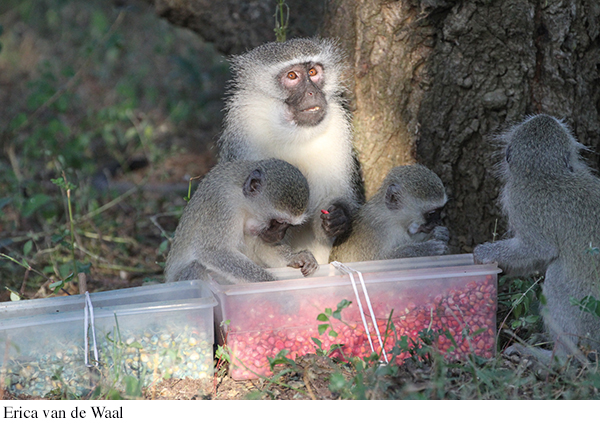
Animal Culture and Observational Learning Chimpanzee tribes in the wild develop their own unique “cultures” or behavioral differences in tool use, foraging skills, and even courtship rituals (Hopper & others, 2007). Other species, too, acquire and transmit distinct behavior patterns through observational learning (Allen & others, 2013; van de Waal & others, 2013). For example, consider a clever field experiment by psychologist Erica van de Waal and her colleagues (2013). Wild adult vervet monkeys developed a preference for pink corn over blue corn after the researchers treated the blue corn with a bitter- r-
Erica van de Waal